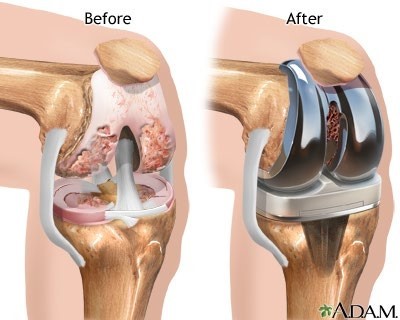The practical nurse (PN) observes two unlicensed assistive personnel (UAP) turning an older client who had a hip arthroplasty with prosthesis placement four hours ago. Which observation by the PN indicates that the UAPs need additional information about the turning procedure?
An abduction pillow is placed between the client's legs when positioned.
The client is told to keep both legs straight and together while turning.
A turning sheet is used under the client for turning and repositioning.
The UAPs keep their backs straight and knees bent when moving the client.
The Correct Answer is B
This is the observation that indicates that the UAPs need additional information about the turning procedure because it is incorrect and may cause complications for the client. The client who had a hip arthroplasty with prosthesis placement should not keep both legs straight and together while turning because this may cause dislocation of the prosthesis, nerve damage, or bleeding. The client should keep the affected leg slightly abducted and supported with pillows or an abduction device.

A. An abduction pillow is placed between the client's legs when positioned correctly and does not indicate a need for additional information. This helps to maintain proper alignment and prevent dislocation of the prosthesis.
C. A turning sheet is used under the client for turning and repositioning is correct and does not indicate a need for additional information. This helps to reduce friction and shear forces on the skin and prevent pressure ulcers.
D. The UAPs keep their backs straight and knees bent when moving the client is correct and does not indicate a need for additional information. This helps to protect their own musculoskeletal health and prevent injuries.
Nursing Test Bank
Naxlex Comprehensive Predictor Exams
Related Questions
Correct Answer is B
Explanation
Choice A rationale:
Asking another nurse about administering adult dosages to children may provide some insights, but it is not a reliable or definitive source of information. The PN should directly communicate with the healthcare provider who wrote the prescription to ensure accuracy and safety.
Choice B rationale:
Call the healthcare provider and clarify the prescription.
Choice C rationale:
While requesting verification from the charge nurse is reasonable, the charge nurse may not have the authority to change or clarify the prescription. The most appropriate action is to directly contact the healthcare provider responsible for the child's care.
Choice D rationale:
Telling the pharmacy to send an accurate child's dosage assumes that the pharmacy made an error, which may not be the case. The PN should confirm the prescription with the healthcare provider to avoid potential mistakes or misunderstandings.
Correct Answer is B
Explanation
Digoxin is a medication used to treat various heart conditions, such as abnormal heart rhythms and heart failure.It works by improving the strength and efficiency of the heart, or by controlling the rate and rhythm of the heartbeat.
One of the important things to monitor when giving digoxin to an infant is the pulse rate. Digoxin can lower the heart rate, which can be dangerous if it becomes too slow.Therefore, the pulse rate should be checked for one full minute before administering digoxin, and the medication should be held if the pulse rate is below 90 beats per minute (bpm) for an infant.
In this case, the infant’s heart rate is 120 bpm, which is within the normal range for a 2-month-old. Therefore, the correct action for the PN to take is to administer the medication and document the heart rate. This is optionbin the list of choices. Optionais incorrect because there is no need to hold the medication or recheck the heart rate in one hour. Optioncis incorrect because there is no need to alert the charge nurse unless there is a problem with the infant’s condition or the medication. Optiondis incorrect because holding the medication and documenting cardiac assessment is not appropriate for a normal heart rate.
Whether you are a student looking to ace your exams or a practicing nurse seeking to enhance your expertise , our nursing education contents will empower you with the confidence and competence to make a difference in the lives of patients and become a respected leader in the healthcare field.
Visit Naxlex, invest in your future and unlock endless possibilities with our unparalleled nursing education contents today
Report Wrong Answer on the Current Question
Do you disagree with the answer? If yes, what is your expected answer? Explain.
Kindly be descriptive with the issue you are facing.
